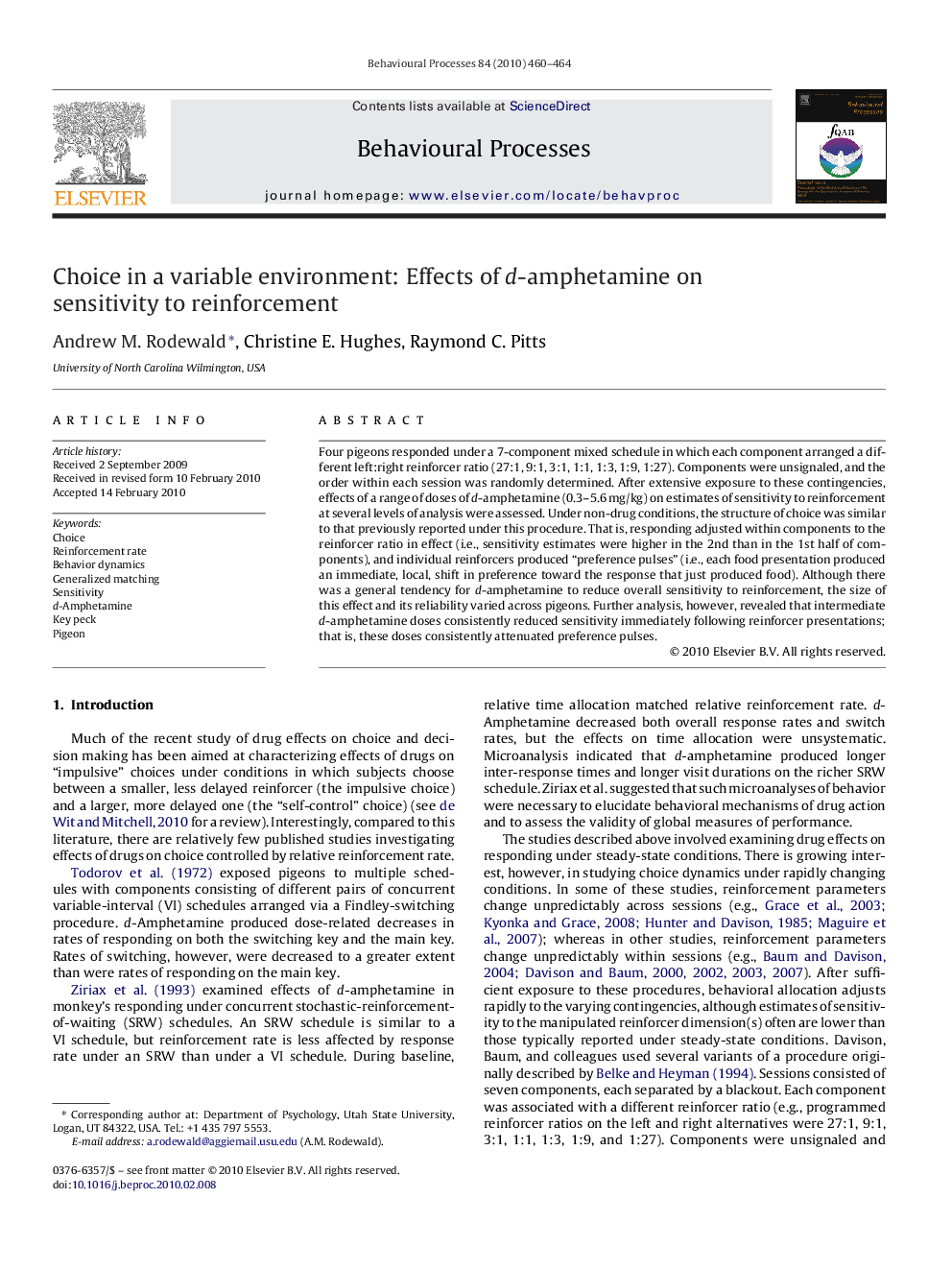| Article ID | Journal | Published Year | Pages | File Type |
|---|---|---|---|---|
| 2427136 | Behavioural Processes | 2010 | 5 Pages |
Four pigeons responded under a 7-component mixed schedule in which each component arranged a different left:right reinforcer ratio (27:1, 9:1, 3:1, 1:1, 1:3, 1:9, 1:27). Components were unsignaled, and the order within each session was randomly determined. After extensive exposure to these contingencies, effects of a range of doses of d-amphetamine (0.3–5.6 mg/kg) on estimates of sensitivity to reinforcement at several levels of analysis were assessed. Under non-drug conditions, the structure of choice was similar to that previously reported under this procedure. That is, responding adjusted within components to the reinforcer ratio in effect (i.e., sensitivity estimates were higher in the 2nd than in the 1st half of components), and individual reinforcers produced “preference pulses” (i.e., each food presentation produced an immediate, local, shift in preference toward the response that just produced food). Although there was a general tendency for d-amphetamine to reduce overall sensitivity to reinforcement, the size of this effect and its reliability varied across pigeons. Further analysis, however, revealed that intermediate d-amphetamine doses consistently reduced sensitivity immediately following reinforcer presentations; that is, these doses consistently attenuated preference pulses.
